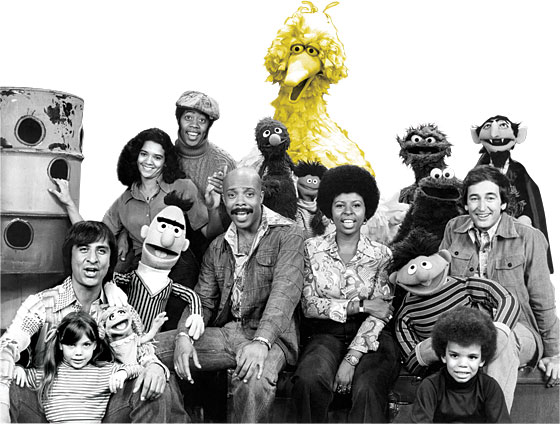 by Corey Alderdice
by Corey Alderdice
The black and white television in the spare bedroom of my grandmother’s house had a twice-daily appointment during my childhood: Sesame Street. Shortly after consumption of a bowl of cereal in the mornings and somewhere just beyond nap-time and reruns of the A-Team in the afternoons came my daily childhood instruction.
Over the years, our furry friends from that fictional New York borough have built quite the pedigree (122 Emmy wins and broadcasts in 140 countries worldwide). In addition to being woven into the very fabric of American culture, the folks at the Workshop have another milestone to celebrate next week: 40 years of television history. Since it’s inception four decades ago, Sesame Street has made a lasting impression on countless children who are now well into adulthood. When the show began, the landscape of both television and culture were very different.
The New York Daily News sums it up nicely:
The groundbreaking show, produced by the Children’s Television Workshop and a staple of public broadcasting, was years ahead of its time in promoting values that are now taken for granted in many places – accepting and appreciating diversity, not making assumptions based on gender, and being sensitive to cultural and economic differences, are all ideas the show emphasized before it was fashionable to do so.
The show has changed over the years in many ways. What was once a program intended to supplement learning for inner city children has become a cultural mainstay.
In time, most people and things grow up. It just so happens that Sesame Street has gotten younger over the years. As a wider variety of children’s programming has developed thanks to the dearth of cable channels, the show has shifted its target audience to younger and younger populations. Today, the intended viewership is someone in the ballpark of a four-year-old.
A CNN headline today boldly proclaims “Seasame Street‘s been swept but the magic of the show remains“. Can you imagine it? The show I watched as a kid featured a blue monster who smoked from a pipe and had a serious eating disorder. Even the recently released DVD collection of early episodes carry the following disclaimer: “These early Sesame Street episodes are intended for grown-ups, and may not suit the needs of today’s preschool child.”
I guess the producers didn’t get that message when the show lampooned the popular AMC series Mad Men.
If you really want to spend some time walking down Memory Lane–which is probably only a few blocks off Sesame Street–be sure to check out The Christian Science Monitor’s collection of their 11 favorite clips from the show’s history. (I still find myself humming the 1-2-3-4-5 pinball song randomly from time-to-time.)
There’s a lot of great stuff on the interwebs today. I hope you don’t mind a variety of sachhrine tributes.
Sesame Street: 40 Years Of Sunny Days David Fear, Time Out New York Kids
Sesame Street: Google Celebrates 40 Years Of Big Bird And The Gang Jack Schofield, The Guardian
How We Got To ‘Sesame Street’ Tim Murphy, New York Magazine
That leads us to the questions: Can entertainment effectively serve a dual purpose of education? Does our contemporary cultural sensitivity challenge nostalgia? Is Sesame Street still relevant?
Finally, check out the following preview of the new season before it premieres of November 10. Jazon Mraz, Michelle Obama and other novelties abound.

